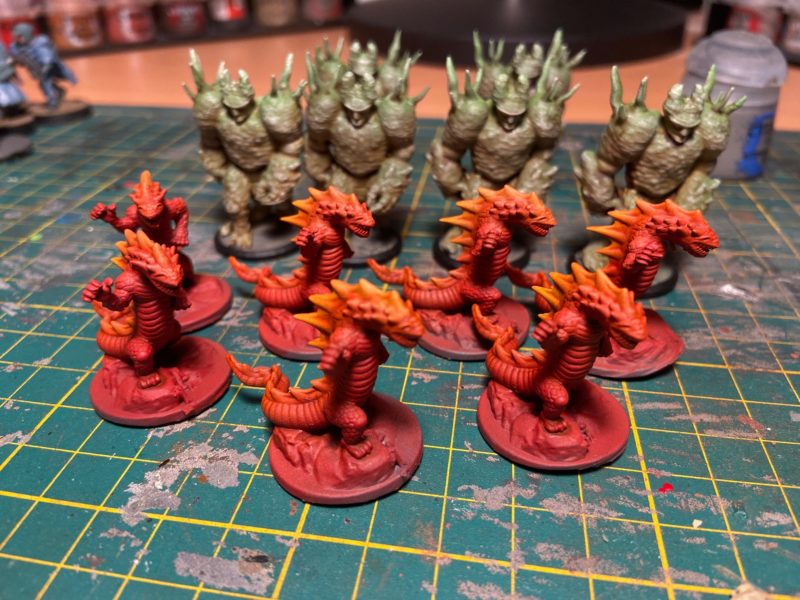We knew it was going to be a hard slog when we started. For the price, you’d expect to get a lot of playtime out of Gloomhaven. And I can report this is indeed the case. When we’ve played D&D the campaigns have taken on a pretty free-wheeling kind of approach to manging the encounters. The broader picture is solid, but when it comes to the specifics, we’ve always relied on The Theatre of The Mind. This approach has its pros and cons. On the con side it gets chaotic and often it’s not clear who’s where. Gloomhaven is much more structured, relying on a hex based system to paint the picture.
It’s an expensive game, relatively speaking. But the content is there and it’s pretty deep. The heroes are plastic minis, and sculpted pretty well. The enemies are all flat cardboard standees. So, enter the 3D printer.
I’ve had a very high success rate with Robagon’s files from Thingiverse. The quality is pretty darn good for freeware material. So far I’ve printed out a batch of Earth Elementals and Rending Drakes. It was very near a 100% print success and with a print time of about five and a half hours, I ended up with a significant amount of characters to paint.
I’ve also learned two new things about DPL printing over the past few weeks which have turned out to really increase the speed of what I’m doing: (1) it’s worth setting the support diameter and penetration depth as low as possible, and (2) remove the supports after cleaning the resin from the model but before you cure it. I’m not sure why I didn’t try these until recently. If you’re using something like an Anycubic Photon you should try too. And if you play Gloomhaven, check out Robagon’s files.

